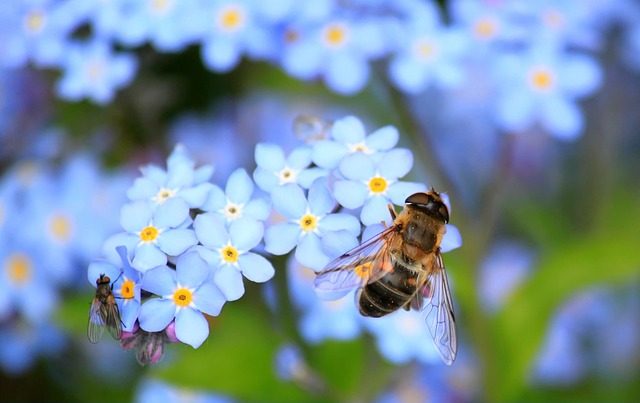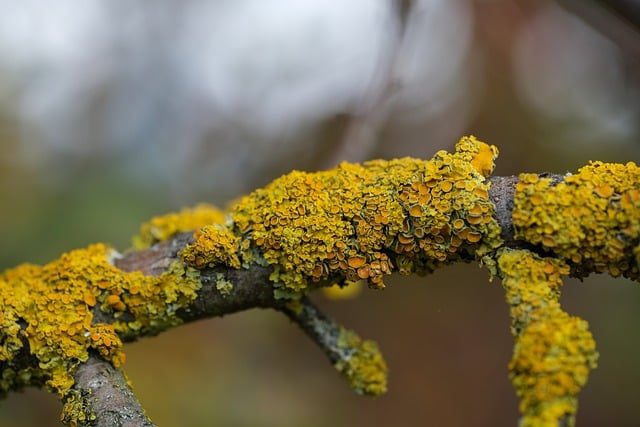Interactions and interdependencies
Relationships in an ecosystem


Areas of Study:
Section One – Glossary
Section Two – The interdependence of organisms in an ecosystem: food webs.
- Food webs and food chains.
- Creating a food web.
Section Three – The interdependence of organisms in an ecosystem: insect pollinated crops.
- Recap: parts of a flower.
- How pollination works.
- Pollination demonstration.
Section Four – The importance of plant reproduction through insect pollination in human food security.
- World Bee Day
- Bees and Food security.
- Designing a pollinator garden.
Section Five – How organisms affect, and are affected by, their environment, including the accumulation of toxic materials.
- What are lichens?
- Lichen observation and sketch.
- How lichens detect pollution.
- Create a lichen pollution guide leaflet or poster.
Section Six – Wrap Up!
- Organize project.
- Assessment Grid.
- Quiz.
Objectives:
- Explain how biotic and abiotic factors affect organisms in an ecosystem.
- Describe the different types of relationships that occur between organisms in an ecosystem.
- Describe the importance of pollinators in the food chain.
Section One: Glossary
- Interdependence
- Organism
- Ecosystem
- Food web
- Pollination
- Scavenger
- Crop
- Environment
- Accumulation
- Toxic
- Biotic
- Abiotic
- Autotroph
- Heterotroph
- Producer
- Consumer
- Decomposer
- Population
- Competition
- Symbiosis
- Predator
- Prey
Activity:
Create a glossary of definitions.
Add more of your own as you work through the sections and activities.
Section Two: Food Webs.
What is the difference between and food web and a food chain?
A food chain outlines who eats whom. A food web is all of the food chains in an ecosystem.
While a food chain only shows a singular path, the food web shows how the paths are connected.
Each type of habitat has it’s own food webs, but they all have commonalities.
Broad habitat types:
- Desert
- Forest
- Grassland
- Savanna
- Scrubland
- Subterranean
- Wetlands
- Marine
Elements of a food web:
- Non-living organism (abiotic)
- Producer
- Consumer
- primary consumer (herbivore)
- secondary consumer (carnivore / eats the herbivore)
- tertiary consumer (carnivore / eats the carnivore)
- apex predator (has no predator / top level consumer)
- Decomposer
- Scavenger
Activity:
Look at examples of food chains and food webs.
Create a food web for an animal or insect of your own choice. Use this guide to help you organize it.
You can draw it, make a models – for example with modeling clay and string, or create it on the computer using your preferred software or something like this.
Here are some sources of info for creating your food web. You could also base it on the video above.
Section Three: Insect pollinated crops.
Recap: parts of a flower.
Remind yourself of the various parts of a flower that are required for pollination.
As a plant’s reproductive part, a flower contains a stamen (male flower part) or pistil (female flower part), or both.
The stamen is the male reproductive organ. It consists of a pollen sac (anther) and a long supporting filament. This filament holds the anther in position, making the pollen available for dispersal by wind, insects, or birds.
The pistil is a plant’s female part. It generally is shaped like a bowling pin and is located in the flower’s center. It consists of a stigma, style and ovary. The stigma is located at the top and is connected by the style to the ovary. The ovary contains eggs, which reside in ovules. If an egg is fertilized, the ovule develops into a seed.
Sepals are small, green, leaflike structures located at the base of a flower. They protect the flower bud. Collectively, the sepals are called a calyx.
The receptacle is the part of a flower stalk where the parts of the flower are attached.
A stem is one of two main structural axes of a vascular plant, the other being the root. It supports leaves, flowers and fruits, transports water and dissolved substances between the roots and the shoots, stores nutrients, and produces new living tissue.
Activity:
Label the parts of the flower. You can use the picture below or draw it yourself.
Make sure that you clearly show that the anther and filament are parts of the stamen; and that the ovary, style, and stigma are parts of the pistil.
Add some descriptions of the different parts.
How does Pollination work?
Pollination is the act of transferring pollen grains from the male anther of a flower to the female stigma.
The goal of every living organism, including plants, is to create offspring for the next generation.
One of the ways that plants can produce offspring is by making seeds. Seeds contain the genetic information to produce a new plant.
Flowers are the tools that plants use to make their seeds.
Seeds can only be produced when pollen is transferred between flowers of the same species.
Cross – pollination.
Sometimes, the process of pollination is completed by animals and insects called pollinators.
These pollinators include bees, butterflies, and bats.
Pollinators are responsible for bringing us one out of every three bites of food we eat.
As they move from bloom to bloom in search of nectar or seeds to eat, they collect and redistribute pollen grains.
This is called cross-pollination.
The wind also aids in cross-pollination is plants such as grasses.
Self – pollination.
Some plants do not need pollinators to aid in fertilization.
Pollen from these plants’ anthers land on their own stigma.
This version of pollination reduces genetic diversity so many plants have evolved to grow characteristics that attract pollinators, like special flower shapes.
Activity:
You are going to demonstrate your understanding of cross-pollination (via pollinators) with a demonstration.
You will need to:
- produce a visual aid
- use your visual aid to demonstrate one or more of the process of pollination
- explain the process of pollination
Your audience:
- does not have any expertise in this area
- does not know the scientific names for the flower parts
Section Four: Pollination and Human Food Security.
World Bee Day.
Read about World Bee Day here. There is a lot of information including a timeline, slide shows, and a quiz.
Declining Bee Populations and Global Food Security.
Bees and other pollinators are declining in abundance in many parts of the world.
This is largely due to intensive farming practices, mono-cropping, pollution, and excessive use of agricultural chemicals.
Nutritious crops such as fruits, nuts, and many vegetables are being substituted increasingly by staple crops like rice, corn, and potatoes. This will eventually result in an imbalanced diet and poor nutrition.
The absence of bees and other pollinators would wipe out coffee, apples, almonds, tomatoes and cocoa to name just a few of the crops that rely on pollination.
Countries need to shift to more pollinator-friendly and sustainable food policies and systems.
Section Five: Organisms and The Accumulation of Toxic Materials.
What are Lichens?
There are three main types of lichens:
- Foliose
- Fruticose
- Crustose
Foliose Lichens
Foliose lichens have two easily distinguishable sides. In other words, there is a top side and there is a bottom side. They can be very flat, leafy like lettuce, or convoluted and full of ridges and bumps.

Fruticose Lichens
Fruticose lichens can be pendant and hair-like, upright and shrubby, or upright and cup-like. Many fruticose lichens have round branches that have a central core and others are hollow in the middle. Other fruticose lichens have flat branches that tangle up with each other.

Crustose Lichens
Crustose lichens are just that, crusts. They form a crust over a surface, like a boulder, the soil, a car, or your roof shingles. They can come in many bright, vibrant colors like sunny yellow, orange, and red, as well as grays and greens. Crustose lichens are pressed against their substrate.

There is more information here about these fascinating organisms.
Activity:
Find some lichens and use a magnifying glass to look closely.
Draw them and take photos.
Some Resources:
- Try to Identify your lichens.
- Identification field guide.
- Lichen Identification Search.
How Can Lichens Detect Pollution?
Lichens love clean air. They have a sensitivity to air pollution which means they make great air quality indicators.
Lichens are able to tell us the effects of air pollution on ecosystems.
To grow, lichens get their nutrients from the air.
Lichens have no roots or protective surface so cannot filter what they absorb.
Whatever is in the air is taken straight inside. If there are pollutants, they can accumulate in the lichen and can become toxic very quickly.
As a rule of thumb, the smaller the size and less variety of lichens in an area, the more polluted is the environment.
Two main air pollutants that affect lichen growth are nitrogen and sulphur dioxide.
Read more about the lichens’ super pollution-detecting powers here.
City Pollution
- Levels of Sulphur dioxide are higher in town centers and decrease as you go further outside the town.
- Levels increase again around industrial areas.
- There are lots of cars in the city centre which are giving out sulphur dioxide and there are less cars as you go further out of town.
- The factories in the industrial area give out sulphur dioxide.
- There are few or no lichens in town centre, then you see crusty lichens, then leafy lichens and then shrubby lichens as you go out from the town centre.
Foliose Lichens
- Foliose (leafy) lichens can tolerate a small amount of air pollution.
- Foliose are less tolerant to sulphur dioxide pollution than crustose lichens.
- They can not tolerate the amount of sulphur dioxide that would be present in an area with very heavy traffic.
Fruticose Lichens
- Fruticose (shrubby) lichens are extremely sensitive and will only grow in very clean air.
- Fruticose lichens have a larger surface area so they absorb more sulphur dioxide pollution which prevents them from growing.
- Fruticose lichens are the most sensitive / least tolerant to air pollution. They cannot survive in even a small amount of air pollution.
Crustose Lichens
- Crustose (crusty) lichens can survive in quite polluted air.
- Even though they are the most tolerant type of lichen to air pollution, even these lichens are not able to survive in very heavily polluted areas.
Activity:
Produce a very simple one page handout or leaflet to introduce people to the importance of lichen and their ability to predict air quality.
This poster / handout will encourage people to visit a web site to find out more. You can make up the name of the website.
It must be:
- Engaging.
- Simple.
- Visual.
- Accurate.
Section Six: Wrap Up!
- Organize your project with a cover & contents. Add the glossary and a resource list if you created one.
- Check your work against the Assessment Rubric.
Which lichen are you?
A lichen is a composite organism that arises from algae or cyanobacteria living among filaments of multiple fungi species in a mutualistic relationship.
Lichens have properties different from those of their component organisms.
They come in many colors, sizes, and forms and are sometimes plant-like, but are not plants.
